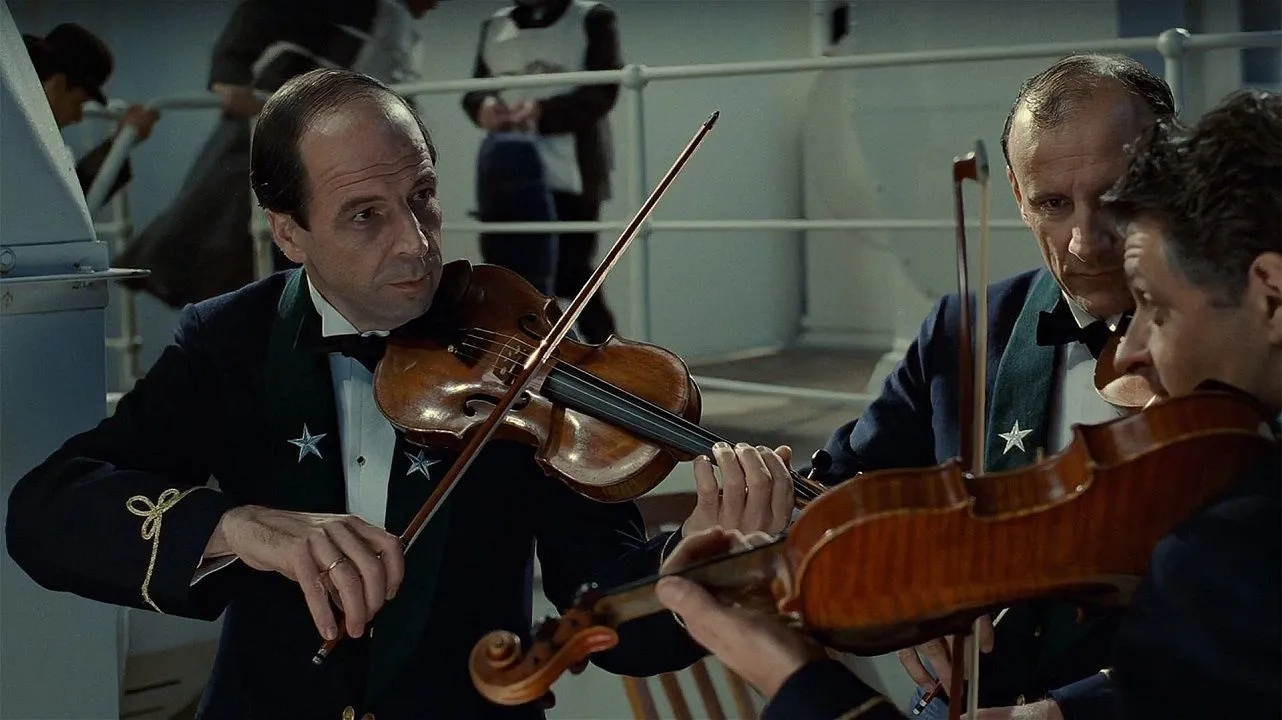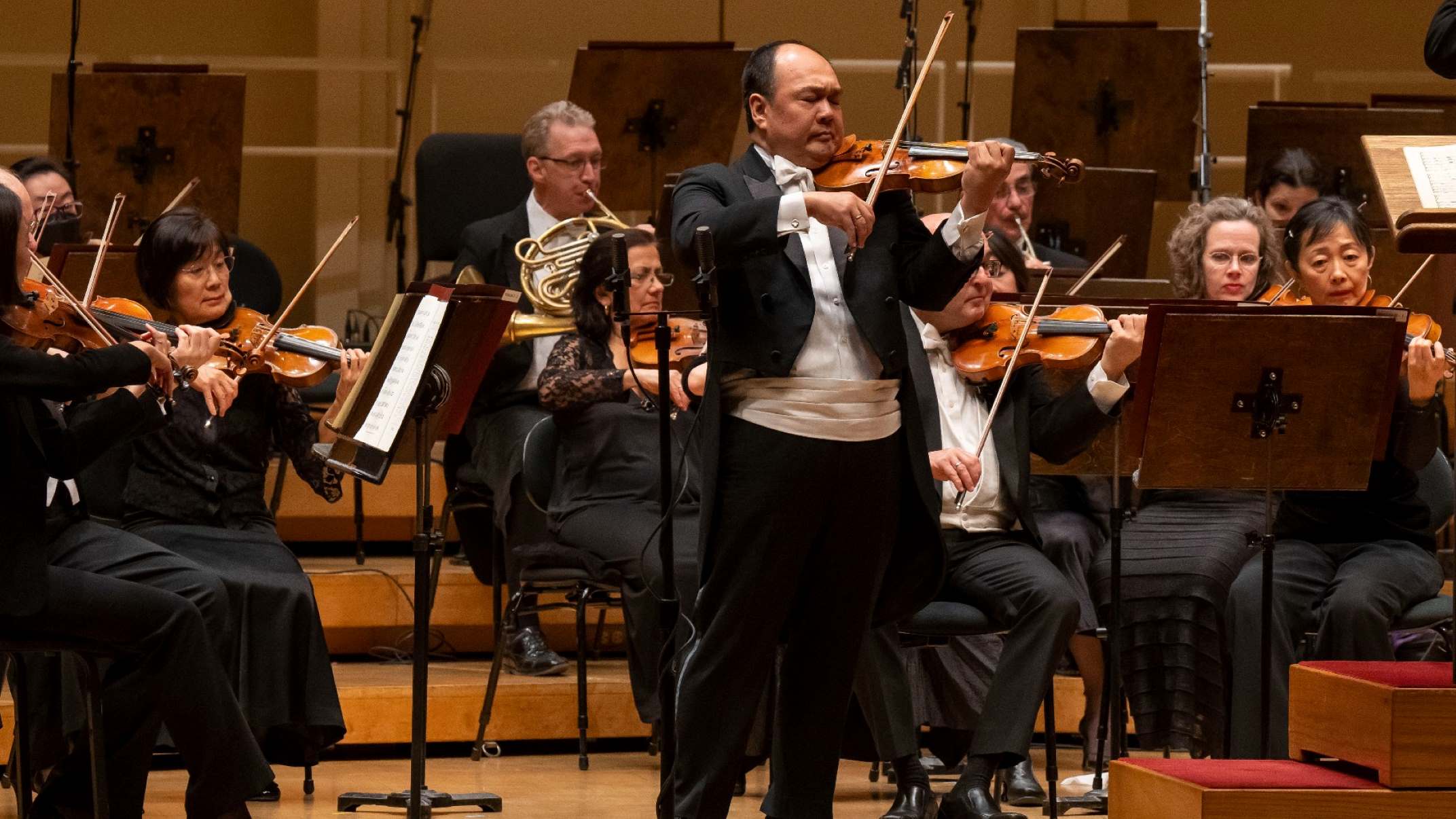Home>Production & Technology>Orchestra>What Song Did The Orchestra Play As The Titanic Sank?


Orchestra
What Song Did The Orchestra Play As The Titanic Sank?
Published: February 25, 2024
Discover the haunting melody performed by the orchestra during the Titanic's fateful sinking. Uncover the musical legacy of the orchestra amidst tragedy.
(Many of the links in this article redirect to a specific reviewed product. Your purchase of these products through affiliate links helps to generate commission for AudioLover.com, at no extra cost. Learn more)
Table of Contents
Introduction
The sinking of the Titanic is a tragic event that has captivated the world for over a century. As the colossal ship met its fateful end in the frigid waters of the North Atlantic on April 15, 1912, the orchestra on board played a haunting melody that has become deeply ingrained in popular culture. The poignant question that has echoed through time is: What song did the orchestra play as the Titanic sank?
Delving into the history of this iconic event reveals a compelling narrative that intertwines music, heroism, and the human spirit in the face of unimaginable adversity. The orchestra's role in the final moments of the Titanic has sparked debates, stirred emotions, and left an indelible mark on the collective consciousness.
In this article, we will embark on a journey to uncover the truth behind the orchestra's performance on that fateful night. We will explore the circumstances surrounding the Titanic's demise, the pivotal role played by the orchestra, and the controversy that continues to shroud the song they purportedly played. By delving into this captivating tale, we aim to shed light on a piece of history that remains as poignant and enigmatic as the haunting melody that echoed across the icy waters of the North Atlantic.
The Titanic's Final Moments
As the clock struck 11:40 p.m. on April 14, 1912, the RMS Titanic, the epitome of luxury and opulence, collided with an iceberg in the icy waters of the North Atlantic. The ensuing chaos and disbelief that swept through the ship were a stark contrast to the grandeur and splendor that had characterized the vessel's maiden voyage. The Titanic, deemed unsinkable by many, was now facing its ultimate test of survival.
In the aftermath of the collision, the crew scrambled to contain the escalating crisis, but the sheer force of the impact had inflicted irreparable damage upon the ship's hull. As the chilling realization of the impending disaster dawned on the passengers and crew, a sense of urgency permeated the air. The ship, once deemed invincible, was now at the mercy of the unforgiving elements.
As the Titanic began its inexorable descent into the icy depths, a profound sense of despair and disbelief engulfed those on board. The crew worked tirelessly to lower the lifeboats, but the sheer magnitude of the unfolding tragedy rendered their efforts futile. Amidst the pandemonium and desperation, acts of bravery and selflessness emerged, as individuals sought to aid others and ensure the safety of women and children.
The haunting sound of distress signals reverberated through the night, piercing the eerie silence that had descended upon the ill-fated vessel. The orchestra, led by bandleader Wallace Hartley, steadfastly continued to play, providing a semblance of solace and fortitude amidst the encroaching darkness. The final moments of the Titanic were marked by a profound juxtaposition of tragedy and resilience, as the ship, once deemed unsinkable, succumbed to the relentless embrace of the icy waters.
The harrowing saga of the Titanic's final moments serves as a poignant reminder of the fragility of human endeavors in the face of nature's formidable forces. The events that unfolded that fateful night continue to evoke a profound sense of reverence and reflection, underscoring the indomitable spirit that persevered amidst the engulfing darkness. It is within these final moments that the orchestra's poignant melody echoed across the expanse of the North Atlantic, etching an enduring legacy that transcends time and resonates with the depths of human emotion.
The Role of the Orchestra
Amidst the tumultuous backdrop of the Titanic's final hours, the orchestra assumed a pivotal role that transcended the confines of conventional duty. Led by the esteemed bandleader, Wallace Hartley, the ensemble of musicians exhibited unwavering resolve and unwavering commitment to their craft in the face of impending catastrophe.
As the ship teetered on the brink of disaster, the orchestra sought to alleviate the mounting tension and instill a sense of calm amidst the chaos. Their melodic strains, infused with poignancy and solemnity, echoed through the corridors of the Titanic, offering a semblance of solace to the beleaguered passengers and crew. The musicians' steadfast dedication to their performance amidst the encroaching peril exemplified the transcendent power of music in times of adversity.
The orchestra's repertoire, comprising a diverse array of classical pieces and popular tunes of the era, served as a poignant accompaniment to the unfolding tragedy. The melodies, ranging from serene compositions to rousing anthems, evoked a spectrum of emotions that resonated with the collective consciousness of those aboard the ill-fated vessel. As the Titanic's fate hung in the balance, the orchestra's unwavering commitment to their craft became a symbol of resilience and fortitude in the face of impending doom.
The musicians' unwavering dedication to their performance amidst the encroaching peril exemplified the transcendent power of music in times of adversity. Their melodic strains, infused with poignancy and solemnity, echoed through the corridors of the Titanic, offering a semblance of solace to the beleaguered passengers and crew. The orchestra's repertoire, comprising a diverse array of classical pieces and popular tunes of the era, served as a poignant accompaniment to the unfolding tragedy.
As the Titanic's fate hung in the balance, the orchestra's unwavering commitment to their craft became a symbol of resilience and fortitude in the face of impending doom. The musicians' unwavering dedication to their performance amidst the encroaching peril exemplified the transcendent power of music in times of adversity. Their melodic strains, infused with poignancy and solemnity, echoed through the corridors of the Titanic, offering a semblance of solace to the beleaguered passengers and crew. The orchestra's repertoire, comprising a diverse array of classical pieces and popular tunes of the era, served as a poignant accompaniment to the unfolding tragedy.
The orchestra's unwavering commitment to their craft amidst the impending calamity serves as a testament to the enduring power of music to transcend the boundaries of despair and imbue moments of tragedy with a semblance of grace and dignity. The musicians' unwavering dedication to their performance amidst the encroaching peril exemplified the transcendent power of music in times of adversity, leaving an indelible mark on the annals of history.
The Controversy Surrounding the Song
The enigmatic legacy of the Titanic's final moments has been shrouded in controversy, particularly concerning the song purportedly played by the orchestra as the ship met its tragic end. The prevailing narrative suggests that the orchestra performed the hymn "Nearer, My God, to Thee" as the Titanic succumbed to the icy embrace of the North Atlantic. However, this account has been the subject of fervent debate and speculation, giving rise to a contentious discourse that continues to resonate within historical circles and popular culture.
The controversy surrounding the song stems from conflicting testimonies and varying firsthand accounts of the orchestra's performance during the Titanic's final hours. While some survivors attested to the haunting strains of "Nearer, My God, to Thee" reverberating through the decks of the ship, others have presented divergent recollections, citing alternative melodies that purportedly accompanied the vessel's descent into the depths. This incongruity has fueled a persistent ambiguity that has perpetuated the mystery surrounding the orchestra's definitive musical selection.
Intriguingly, the debate surrounding the song played by the orchestra has transcended the realms of historical inquiry and engendered a profound cultural fascination. The enduring allure of the Titanic's tragic demise, coupled with the enigmatic nature of the orchestra's performance, has precipitated a proliferation of theories and conjectures regarding the elusive melody that echoed across the ill-fated vessel. This confluence of historical intrigue and popular fascination has perpetuated the controversy, imbuing it with an enduring relevance that transcends the annals of time.
The controversy surrounding the song purportedly played by the orchestra as the Titanic met its untimely demise stands as a testament to the enduring enigma that permeates the historical narrative of the ill-fated vessel. The elusive melody that accompanied the ship's final moments has become emblematic of the profound mystery and poignancy that enshrouds the Titanic's legacy, captivating the imagination of generations and perpetuating a discourse that transcends the confines of historical inquiry. As the debate continues to unfold, the controversy surrounding the orchestra's performance serves as a poignant reminder of the indelible imprint that the Titanic has left upon the tapestry of human history.
Conclusion
The enduring legacy of the Titanic's final moments, intertwined with the enigmatic narrative of the orchestra's performance, continues to resonate with a profound sense of reverence and poignancy. The haunting melody that echoed through the corridors of the ill-fated vessel has transcended the confines of time, leaving an indelible imprint upon the collective consciousness of humanity. As the Titanic succumbed to the relentless embrace of the North Atlantic, the orchestra's unwavering commitment to their craft became a symbol of resilience and fortitude in the face of impending doom.
The controversy surrounding the song purportedly played by the orchestra as the Titanic met its untimely demise stands as a testament to the enduring enigma that permeates the historical narrative of the ill-fated vessel. The elusive melody that accompanied the ship's final moments has become emblematic of the profound mystery and poignancy that enshrouds the Titanic's legacy, captivating the imagination of generations and perpetuating a discourse that transcends the confines of historical inquiry. As the debate continues to unfold, the controversy surrounding the orchestra's performance serves as a poignant reminder of the indelible imprint that the Titanic has left upon the tapestry of human history.
The orchestra's poignant strains, infused with solemnity and grace, reverberate through the annals of time, evoking a profound sense of introspection and remembrance. Their unwavering dedication amidst the encroaching peril serves as a testament to the enduring power of music to transcend the boundaries of despair and imbue moments of tragedy with a semblance of grace and dignity. The orchestra's performance on that fateful night embodies the quintessence of human resilience and the transcendent potency of art in the face of adversity.
As we reflect upon the legacy of the Titanic and the orchestra's haunting melody that permeated its final hours, we are reminded of the enduring capacity of the human spirit to find solace and fortitude amidst the most harrowing of circumstances. The orchestra's performance, shrouded in controversy and imbued with profound significance, stands as a testament to the immutable power of music to transcend the confines of time and resonate with the depths of human emotion. In the echoes of that haunting melody, we find a timeless tribute to the resilience, bravery, and indomitable spirit that endure in the face of adversity, encapsulating the enduring legacy of the Titanic and the enigmatic narrative of the orchestra's final performance.











